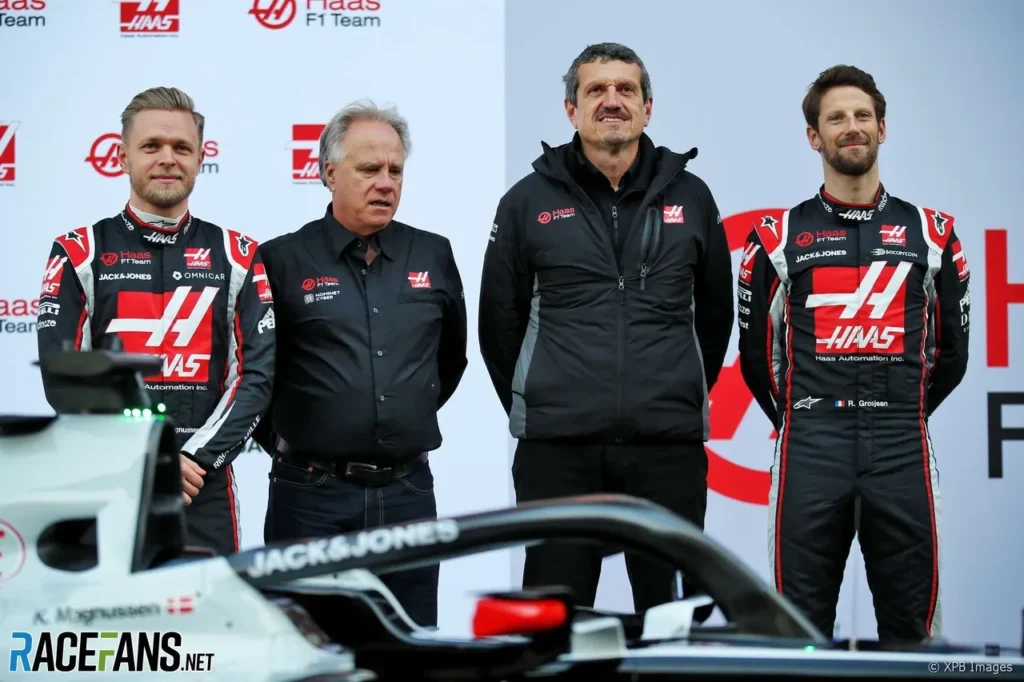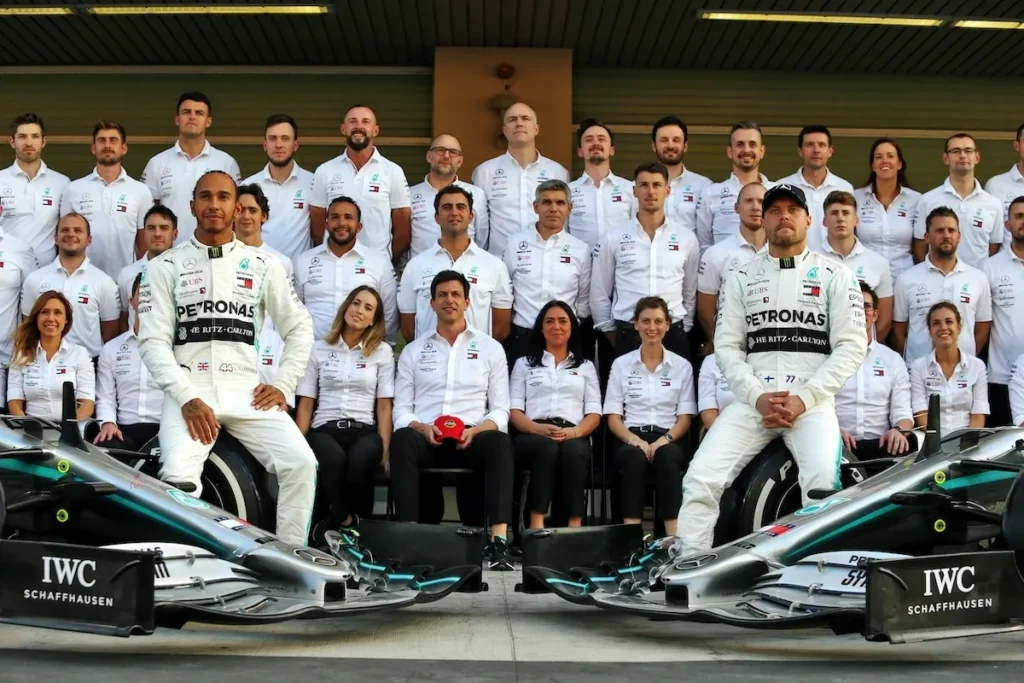
Competitor or colleague? Team and individual ambitions
Team leaders have to find a way to manage the tension between individual ambition and team effectiveness. It is true in sport, in business, and in any shared endeavour.
I am not a massive Formula 1 fan, but I have been loving the Netflix series “Drive to Survive”, and I’m looking forward to the release of the third series later this week. F1 is the context for incredible story-telling of the intersection between individual and team. The collisions are fast and dangerous and they happen both in and out of the race cars.
Drivers loom large in the narrative, but always framed by their relationships with each other, their families, team bosses, and the hundreds of people on each team who collectively get the cars on the track. It is heady stuff for those of us who geek out on team and organisational dynamics, and who thrive on the bigger story.
The relationship between drivers on the same team features regularly. Each team fields two basically identical cars, and of course each car needs a driver. At the end of each racing season, there is an award for the individual champion (the driver who gets the most points in a season) and another for the teams champion (based on the combined points of both cars).
A notorious incident featured in season 1, episode 3 between Red Bull drivers (Perth-boy) Daniel Ricciardo and the young (apparently better paid) Max Verstappen. The crash at Azerbaijan in 2018 resulted in both cars exiting the race. When team principal, Christian Horner was asked about how angry he was about it, all he could manage was “very!”. They were each reportedly required to apologise to the 800 staff on the Red Bull team. Their individual choices in the car damaged both of their individual title chances, and the team’s title chances.
The show is full of disarmingly candid moments, none more so than when Verstappen spoke about how hard it was to be happy for the Red Bull team when Ricciardo won later in the season at Monaco. “I should have won that race… you have to stand there and try and smile…“
In 2019 (featured in Season 2), Ricciardo moves from Red Bull to the Renault team. Episode 8 features the dynamics with his new team mate, Renault driver Nico Hulkenburg. Identical tensions emerge. Daniel Ricciardo explains why.
Naturally, you don’t want your teammate to be the next big thing and ruin your career early. If that teammate kicks your ass then your career can be in jeopardy…
“All of us are in it for ourselves at the end of the day.
He will start 2021 in his third team in 4 years, chasing his elusive individual success.
Episode 7 in Season 2 features the famous Ferrari team in 2019. Its lead driver is the 4-time individual champion, Sebastien Vettel, who is joined by a young and very talented rookie, Charles Le Clerc.
With breathtaking understatement, Ferrari team principal Mattia Binotto comments “Certainly there is a natural rivalry between the team mates“.
Le Clerc is less circumspect. “Seb is obviously the first person you want to beat, because at the end he is the only person on the grid that has the same car as yourself.“
The great French driver of an earlier era, Alain Prost, agrees. When you have a team, 2 drivers, your main competitor is always your team mate.
It is not only in the high-octane world of motor sport that the intersection of individual ambition and team objectives results in scar-tissue. We each have our own stories where this tension exists, and heroes and villains in each chapter of that story. The villains are often very nice people, but who reconcile their individual interests with those of the team quite differently than we would have hoped.
My experience as a partner in a commercial law firm was one example among many. At the level we spoke about most frequently, the partners in the firm had a shared interest in collaborating, winning work, employing the most talented lawyers, and building the brand that provided the platform for us all to thrive. We shared profits. But on the often unspoken level, we competed among ourselves for the status of being engaged by the most prestigious clients, and measured ourselves on internal rankings showing our respective billings. Externally published league tables highlighted leading lawyers in the various disciplines, and there were those who notoriously made sure that the resources of the firm were directed to getting their name high on that list (implicitly at the expense of their partners).
The level of dexterity with which the organisation managed (or avoided) that intersection determined the health of the relationships between us and our collective capacity.
We see the same dynamic at play in the organisations we work with, in education, business and not-for-profits. More often than not, the tension remains subterranean, unspoken. We think that leads to sub-optimal relational and systemic outcomes.
What can leaders do to help establish the kind of champion team that John McGrath famously told us always beats a team of champions.
Put another way, what culture brings the healthiest balance and most effective collaboration to this tension between individual and team goals?
A 2018 Harvard Business Review article “The Leaders’ Guide to Corporate Culture” provides helpful language to make sense of how organisations seek to reconcile the individual and the team.
It defines culture as:
“the tacit social order of an organisation: It shapes attitudes and behaviours in wide-ranging and durable ways. Cultural norms define what is encouraged, discouraged, accepted, or rejected within a group. When properly aligned with personal values, drives, and needs, culture can unleash tremendous amounts of energy toward a shared purpose and foster an organisation’s capacity to thrive.“
It then suggests that a spectrum exists of how the individual and the team are prioritised within the norms of the specific organisation:
“… from highly independent to highly interdependent. Cultures that lean toward the former place greater value on autonomy, individual action, and competition. Those that lean toward the latter emphasise integration, managing relationships, and coordinating group effort. People in such cultures tend to collaborate and to see success through the lens of the group.”
A common assumption in business is that the former is well adapted to extract high performance and the latter to a more gentle environment.
Let’s test this by returning to F1.
Interviews with the team bosses feature in each episode of Drive to Survive. There are vivid examples of different management styles on show, with the impact on culture obvious to all. It is from these that we can draw this discussion together to see what we can learn and apply if we are looking to build teams that flourish and perform.
Sitting roughly at either end of the spectrum are the approaches of Guenther Steiner, the sarcastic and self-described “emotional” principal of upstart US-based Team Haas, and Toto Wolff, a successful Austrian investor and former driver who leads the outstanding Mercedes team.

Let’s start with Guenther Steiner and Team Haas.
The exchanges between the team owner (the guy with the money) Gene Haas, and Steiner are some of the most excruciating in the show. There is unmistakeable menace in Haas’ comment to Steiner after another disappointing race outcome. “I hope you get it fixed…”. The consequence of failure does not need to be said. Unsurprisingly, the pressure translates downwards.
The second episode of season 2 features the tension building within the Haas team as it fails to live up to its own aspirations. Enter Steiner and his inspiring pep talks:
“If I have to remind you to do your own job every day, you are in the wrong xxxx place. This is not a xxxx kindergarten here…”
At this point, the individual ambition of the 2 drivers re-emerges to test (or more accurately and painfully, reflect) team culture. Inevitable contact between the 2 Haas cars results in both needing to retire. Time for Steiner to shine.
“I’ve xxxx had enough of both of you. You let the xxxx team down, me down when I protected you all the time… I’ve no more to xxxx say to you guys, and if you don’t like it, I don’t need you here. Do not come back please.” Please!
“We’ve got 2 xxxx idiots driving for us. This is not acceptable. We will make changes. If it would be my decision now, I would sack them both.“
Gene Haas has the last prescient word “What are we doing this for?” Indeed.
Wolff presents somewhat differently. Charming, independently successful and part owner of the team as well as its principal, he runs a very tight ship. “We are very confident about what we can achieve but we must not let one bit of complacency creep in.”
“We win and we lose together.“
It is evident that Mercedes has taken a considered approach to the relationship between the drivers and their place in the team.

“We have the challenge of managing 2 drivers within the team. Lewis [Hamilton] is the best racing driver of his generation with 5 world championship titles. Valtteri [Bottas] is an extremely talented racing driver. He is performing at a very high level… It was a very conscious decision to take Valtteri on board.“
Bottas then fills in the blanks. “There was many difficult things to accept in terms of in which kind of role I had to be in the team, sometimes in more like a supportive role. But it is difficult… “
That is, Hamilton is acknowledged within the team as the first driver. Other teams studiously avoid that kind of explicit hierarchy, leaving the drivers constantly wondering which of them will get priority in the heat of battle. That sets the context for them to take matters into their own hands.
It is easy to look and sound good when winning. Culture is best tested under pressure, as emphasised by Niki Lauda, former champion driver, who supported Wolff at Mercedes until his recent death. “Winning is one thing, but out of losing, I always learned more because you don’t waste time blaming someone else. Analyse yourself, change yourself, to be more successful.“
Episode 4 of season 2 gives a revealing insight into how Mercedes’ culture plays out when things are not going right. This on the biggest stage of Mercedes celebrating 125 years in motor sport and their 200th Grand Prix at its home German race. The race is a disaster. Hamilton is towards the back of the field after a lengthy pitstop and a spin following a driver error, and seeks consent to retire the car. “Negative Lewis, negative. There are always opportunities” comes the instruction over the radio.
Wolff: “You must never give up. Even if the situation looks desperate, because even if it is just about collecting a single point, that can make a difference to a championship.“
When a Bottas error led to his crash and exit, the team’s day went from bad to worse.
Wolff again: “We lost the race because we were not good enough. Our racing wasn’t good enough.” Our racing.
“When you screw up, you want to identify the person. It’s how the human mind works. But we have a no blame culture. We blame the problem rather than the person. Which is easier said than done.”
At the press conference, he continued. “It was a terrible day for us. … I wouldn’t want to pin it to one bad decision or one incident. There was a multitude of things that went wrong.“
It continued in the one on one conversations afterwards, caught by the Netflix cameras, when Hamilton apologised to Wolff (somewhat) privately. The response:
“No, when we make mistakes, we all make them together.”
“The most difficult races, the most painful events, are the ones where you learn the most. At the end, we will learn from it, we will recover and come out stronger.“
Wolff and Mercedes place a strong emphasis both on results and on learning. This is always understood as a collective responsibility.
What can we take away if we wish to create the kind of culture that allows individuals to flourish within teams, and for teams to achieve their goals? A few thoughts, all centred on clarity:
- Purpose sits at the heart of the team. Collective accountability for results is only possible when the team purpose is identified and shared. Nature hates a vacuum and individual ambition will always fill a void if there is no genuine (and clearly communicated) shared objective.
- Define individual roles within the team, which empower individuals to align their own goals with the team objectives. When misalignment occurs, it is addressed explicitly and empowers individual choice – to remain and contribute, or seek opportunities elsewhere.
- Disciplined commitment by leaders to shared learning when mistakes happen holds the team focus under pressure. A leader’s language is powerful, but only when reinforced by the leader’s behaviour. The collective hunt for improvement in the system to anticipate and accommodate the inevitability of individual error is one of the more noble opportunities of the group, and responsibilities of the leader.
Wolff and Mercedes must be doing something right. In 2020, they secured a record-breaking 7 consecutive double championships – the individual driver and the team championship.
